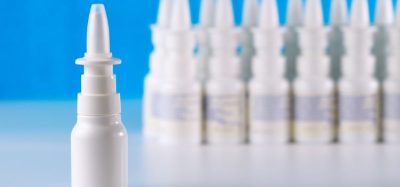Highly potent nanoparticle COVID-19 vaccine designed using computer
Posted: 3 November 2020 | Hannah Balfour (European Pharmaceutical Review) | No comments yet
Developers suggest that the potency, stability and manufacturability of the nanoparticle vaccine candidate could enable vaccination against COVID-19 on a global scale.
![Artist's depiction of an ultrapotent COVID-19 vaccine candidate in which 60 pieces of a coronavirus protein (red) decorate nanoparticles (blue and white). The vaccine candidate was designed using methods developed at the UW Medicine Institute for Protein Design. The molecular structure of the vaccine roughly mimics that of a virus, which may account for its enhanced ability to provoke an immune response [Credit: Ian Haydon/ UW Medicine Institute for Protein Design].](https://www.europeanpharmaceuticalreview.com/wp-content/uploads/Nanoparticle-covid-19-vaccine.jpg)
![Artist's depiction of an ultrapotent COVID-19 vaccine candidate in which 60 pieces of a coronavirus protein (red) decorate nanoparticles (blue and white). The vaccine candidate was designed using methods developed at the UW Medicine Institute for Protein Design. The molecular structure of the vaccine roughly mimics that of a virus, which may account for its enhanced ability to provoke an immune response [Credit: Ian Haydon/ UW Medicine Institute for Protein Design].](https://www.europeanpharmaceuticalreview.com/wp-content/uploads/Nanoparticle-covid-19-vaccine.jpg)
Artist's depiction of an ultrapotent COVID-19 vaccine candidate in which 60 pieces of a coronavirus protein (red) decorate nanoparticles (blue and white). The vaccine candidate was designed using methods developed at the UW Medicine Institute for Protein Design. The molecular structure of the vaccine roughly mimics that of a virus, which may account for its enhanced ability to provoke an immune response [Credit: Ian Haydon/ UW Medicine Institute for Protein Design].
Researchers have developed a self-assembling nanoparticle vaccine candidate for COVID-19. According to the team, the vaccine produced 10 times the amount of SARS-CoV-2-specific neutralising antibodies in mice than a soluble SARS-CoV-2 Spike (S) protein vaccine did. SARS-CoV-2 is the virus that causes the novel coronavirus disease 2019 (COVID-19).
The vaccine candidate was developed using structure-based vaccine design techniques invented at University of Washington School of Medicine (UW Medicine) in Seattle, US. The self-assembling protein nanoparticle displays 60 copies of the SARS-CoV-2 S protein’s receptor-binding domain in a highly immunogenic array. The molecular structure of the vaccine roughly mimics that of a virus, which may account for its enhanced ability to provoke an immune response.
According to researchers, compared to vaccination with soluble SARS-CoV-2 S protein (the approach which many of the COVID-19 vaccines currently in development are based on), their novel nanoparticle candidate produced ten times more neutralising antibodies in mice at a five-fold lower dose.
In the paper, soon to be published in Cell, immunisation with the nanoparticle COVID-19 vaccine induced a strong B cell response in mice, which is thought to be critical for immune memory and a durable protective effect. When administered to a single non-human primate, the nanoparticle vaccine produced neutralising antibodies targeting multiple different sites on the SARS-CoV-2 S protein. The researchers suggested this may allow the vaccine to protect against mutant strains of SARS-CoV-2, should they arise. The S protein is used by the virus to interact with host cell receptors and initiate viral entry into the cell.
“We hope that our nanoparticle platform may help fight this pandemic that is causing so much damage to our world,” said Neil King, an assistant professor of biochemistry at the UW Medicine and the inventor of the computational vaccine design technology at the Institute for Protein Design at UW Medicine.
Hundreds of potential COVID-19 vaccine candidates are currently under development globally. According to the team, many will require large doses, complex manufacturing and cold-chain shipping and storage to be effective. The researchers said an ultrapotent vaccine that is safe, effective at low doses, simple to produce and stable outside of a freezer could enable vaccination against COVID-19 on a global scale. King said with regards to their novel nanoparticle vaccine: “The potency, stability and manufacturability of this vaccine candidate differentiate it from many others under investigation.”
The nanoparticle vaccine candidate has been transferred to two companies for clinical development.
Related topics
Drug Development, Formulation, Vaccine Technology, Vaccines, Viruses









